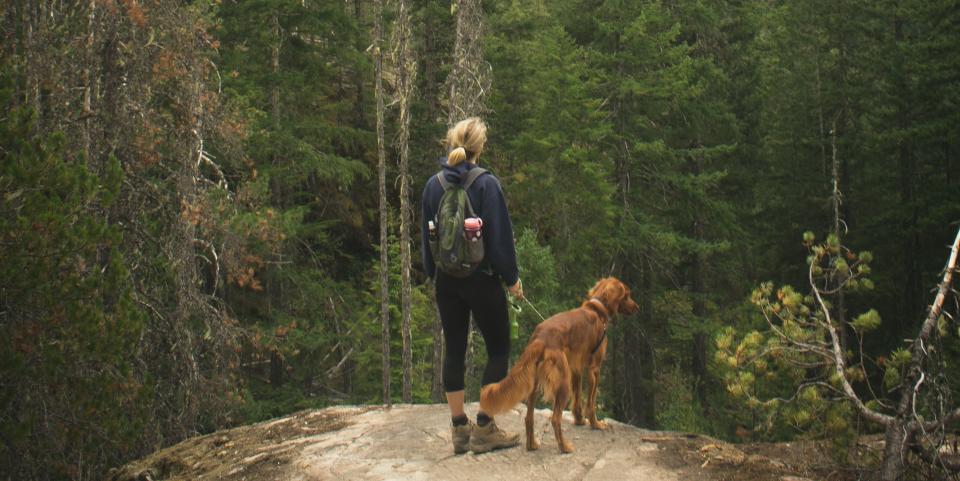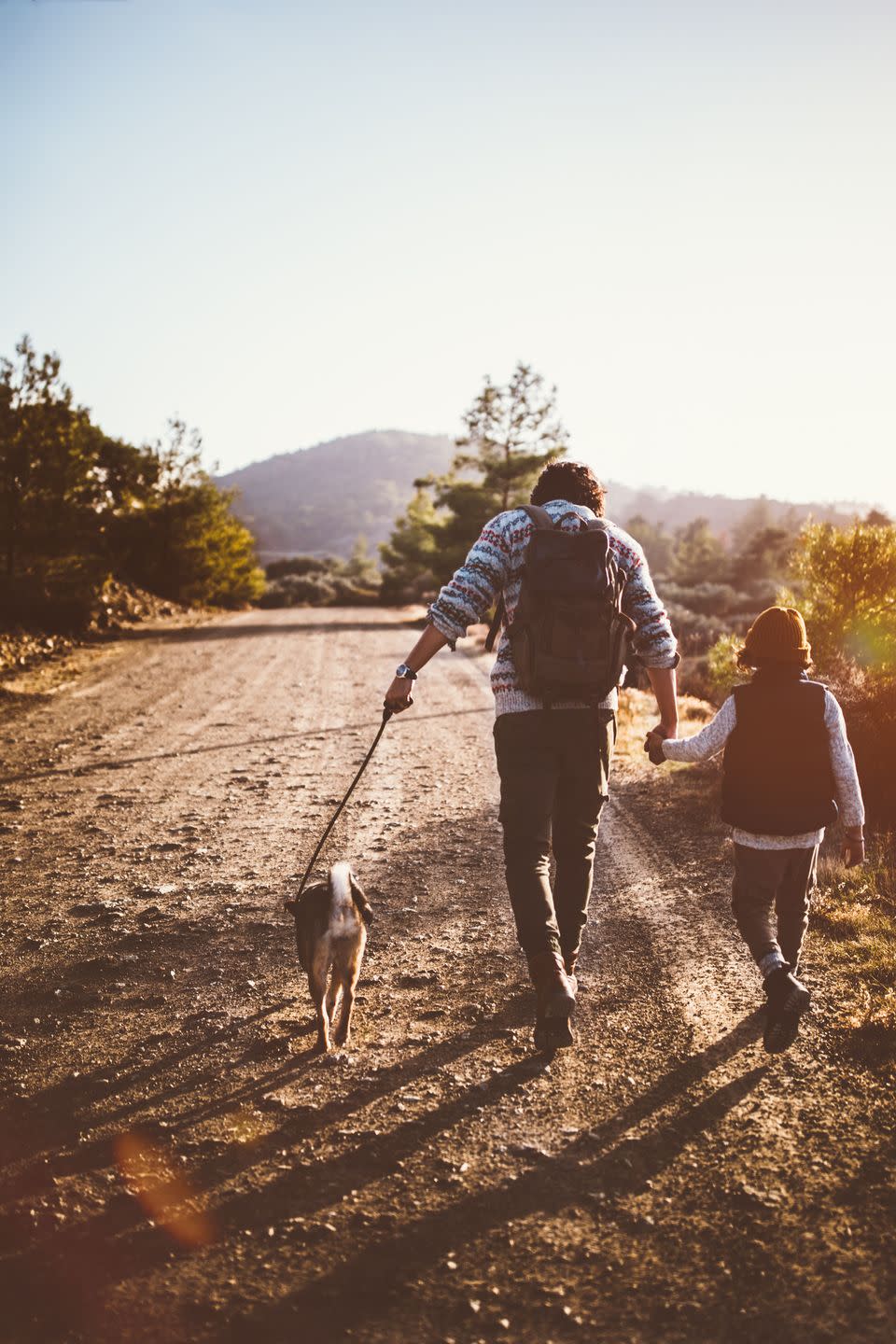A beginner's guide to hiking with your dog

Hiking with your dog is a great bonding experience and encourages you to adopt their curiosity and sense of adventure, but it requires a lot of preparation. A long-distance trek is quite different to a daily walk, so you'll need to make sure your dog is healthy enough to hit the trail.
Before you lace up your hiking boots, expert vet Sean McCormack advises: "Both you and your dog need to build up your endurance levels for regular hiking activities – so start slow, gradually increasing the length and difficulty of your routes."
Remember not to rush into anything and always plan a safe route first. Once you've decided where to hike, it's time to pack your bag. Some of the essentials include:
Collapsible food and water bowls
Enough food for the day, including extra calories to give them strength
Lots of clean water
Dog boots (in case of uneven ground)
Tent and bedding (if staying overnight)
A basic first aid kit, including antiseptic for small grazes, a tick remover tool and basic bandaging materials
Dog backpacks to allow them to carry some of their own supplies. Make sure not to overload the bag, but use it only for lighter items
Once you're packed, here are four things you must consider before hiking with your dog...
1. Wear a lead
It's important to always pack a dog lead. During March and July, all pups are required to be on a lead in the countryside to protect vulnerable ground-nesting birds and other wildlife. While it might be tempting to let them roam free, it's always better to be safe.
If you're hiking at other times of the year, dogs should either be on a lead or under your control nearby. "This is a great reason to get working on your dog's obedience training, especially recall, to allow them the freedom to exercise off lead responsibly and come back when there is a potential hazard," Margaret Anderson from Northumberland National Park, adds.
Even the most well-behaved dogs can cause stress to livestock, so always keep the lead securely fastened when journeying through the countryside.

2. Check vaccinations
"Make sure your dog's vaccinations and worming are up to date to prevent the risk of disease or transmission to wildlife and farm animals," Sean adds, explaining the rise of ticks in the UK.
If you do find a tick has attached itself to your dog, use a tick removal tool to twist and lift the tick off the skin. "It's important to make sure you remove the tick properly and get the head out, as just pulling at the tick can often leave the mouthparts still embedded and lead to a risk of infection from nasty bacteria," Sean advises.
"However, if you aren't confident in removing a tick on your own, call your local vet for help."
3. Stick to pathways
It can be tempting to go off-piste, but always stick to visible pathways when going on a rural hike. To avoid getting lost, pack a compass and map of the area you are exploring as signal may drop off. Before you begin your journey, it's important you plan your route.
Don't forget to keep a close eye on the ground; venomous adders can hide in woodland glades, heathlands and moorlands. "Adders tend to stick to overgrowth so sticking to pathways can help prevent you from coming across an adder," Sean adds. "They are secretive animals and most attacks happen when they are trodden on or picked up."
While an adder bite is a rare occurrence, it can be painful but is almost never fatal. If you or your dog is bitten, medical attention should be sought immediately.

4. Don't forget to clean up
Hiking not only provides dogs with much-needed exercise, but it gives them the chance to bond with their owners. When you're on your adventure, don't forget to clean up after your dog and dispose of waste responsibly. Diseases from dropped dog waste can infect people, farm animals and wildlife.
Margaret says: "Always bag and bin your dog poo – flicking it into the undergrowth or hanging it in a tree just moves the problem to a different place. Bag it and bin it, any bin is fine."
You Might Also Like

 Yahoo Sport
Yahoo Sport 





































